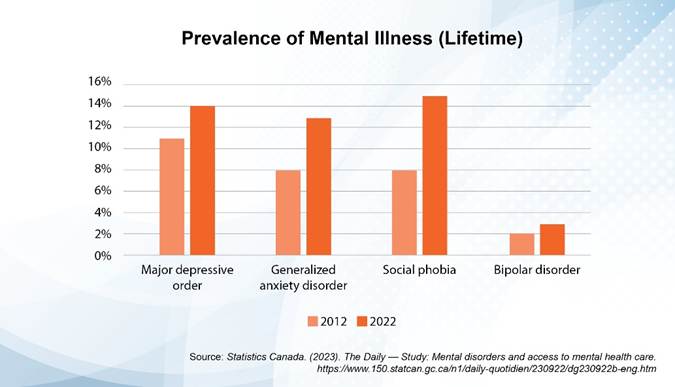Why the role of employers is critical and 'cannot be one-size-fits-all'

"We are in a mental health crisis," warns Olga Morawczynski, co-author of a newly released report from the CSA Group. "If you look at any data on mental health in Canada, it's been trending in the wrong direction for over a decade—especially since the pandemic."
The report, Navigating the Mental Health Crisis in Canada: The Critical Role of Employers, highlights alarming statistics: one in five Canadians will experience a mental illness this year, and half the population will face a mental health issue before the age of 40. While these challenges impact workers on a personal level, they also impose massive costs on businesses.

Morawczynski and her team dug into a crucial but often overlooked reality—work itself is a significant factor in mental health outcomes. "In a previous study, we found that 80% of employees who had taken disability leave cited work as either the primary cause of their mental health issue or a factor that worsened it," she says. "That number stuck with me for years."
What works: Four case studies in action
The report doesn’t just outline the problem—it also showcases solutions. The research team examined four organizations across different industries: Magna International, the University of British Columbia (UBC), Imagine Canada, and the law firm YLaw. Each organization implemented mental health programs tailored to their workforce’s specific needs, and the results were measurable.
Magna International, a global auto parts manufacturer, launched a workplace health clinic to address a gap in primary care access for its employees. Many workers hadn’t seen a doctor in years, and untreated health issues were leading to costly disability leaves. By providing onsite medical services, Magna saw a $5 million cost avoidance in just a few years.
YLaw, operating in an industry notorious for burnout, took a radically different approach. "The legal profession runs on a billable hours model. Lawyers are overworked, and burnout rates are through the roof—especially for young and female lawyers," Morawczynski explains. In response, YLaw introduced a four-day workweek, an unheard-of move in the legal sector. The impact was immediate: retention rates soared, and the firm grew by 600% over five years.
Read next on BPM: What are the common types of mental illness in the workplace?
UBC, meanwhile, leaned into data-driven decision-making. By analyzing disability claims, employee surveys, and research on well-being, the university built targeted programs addressing the root causes of workplace stress. "They didn’t just offer generic well-being programs," Morawczynski notes. "They studied their workforce, identified the specific challenges, and designed solutions that actually addressed those pain points."
Imagine Canada, a nonprofit, prioritized workplace connection. Recognizing that interpersonal relationships play a vital role in mental well-being, the organization created initiatives such as team retreats and a "connection fund" to strengthen workplace bonds. "More and more, work is one of the few places where people can find community," Morawczynski observes. "Imagine Canada understood that and built programs to support it."
Lessons for health and safety leaders
For health and safety professionals, the report offers clear takeaways. The first is that psychological health and safety must be treated as a business priority—not an optional wellness perk.
“We’re already seeing conversations about integrating psychosocial factors into occupational health and safety (OHS) regulations at the provincial level,” Morawczynski says. “Within three to five years, I expect psychological health and safety to be a legal requirement across most provinces.”
That means organizations should start integrating mental health considerations into their safety programs now. The best place to begin? Data.
“Look at your disability claims. Survey your employees. Identify the root causes of workplace stress in your specific organization,” she advises. “And remember, mental health programs cannot be one-size-fits-all. The companies that succeed are the ones tailoring their approach.”
Morawczynski also challenges employers to rethink traditional benefits. "Right now, our benefits system isn’t aligned with what people actually need," she argues. "Most plans offer limited therapy coverage, and they assume psychotherapy is the only solution. But what about financial stress? Career development? Social support? Mental health isn’t just about access to a therapist—it’s about creating an environment where employees can thrive."
For organizations that have yet to prioritize workplace mental health, the message is clear: the cost of inaction is high. Employers that invest in meaningful, well-designed mental health programs see lower disability claims, reduced turnover, and increased productivity. The evidence is there—it’s now a matter of leadership commitment.
"Start small if you have to," Morawczynski urges. "But start. The companies that are doing this well aren’t just improving employee well-being—they’re strengthening their bottom line, too. This isn’t just the right thing to do. It’s the smart thing to do."





